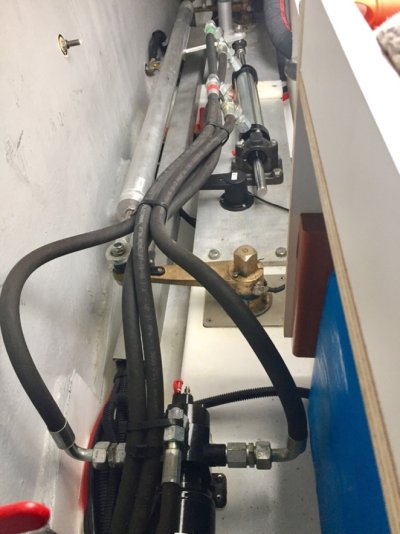MichaelB1969
Guru
- Joined
- Oct 15, 2016
- Messages
- 679
- Location
- USA
- Vessel Name
- Speedy Charlotte
- Vessel Make
- Beneteau Swift Trawler 44


With that system, the source has to be from a joint. Get your wrenches out and tighten all that you can see. Of course, the visible oil is running downhill along that bundle from the actual leak. Also, you will have the fun of wiping up ATF for weeks to come, even after fixing the leak. It likes to hide and reappear when your clothes are clean. Ask me how I know...?
Wrap the area with a shop towel or an oil pad so it doesn't make a bigger mess.
Keep a CLOSe eye on the fluid levels.
The A/P and the manual steering are NOT separate. They join at the cylinder.
A leak in one will eventually affect the other.
If you have the oil absorbent pads they are even better than paper towels. I will say though that the Scot Blue shop paper towels are a far cry better than the white towels.
